General
Diving with Mermaid Liveaboards – Raja Ampat Dive Cruise
Explore the best diving sites of the Raja Ampat Archipelago (Papua, Indonesia)
Take a unforgeteable exclusive dive safari through the islands of Raja Ampat one of the best dive spots in the world !
Scuba diving in Raja Ampat is diving the worlds richest reefs!
Visit the biodiversity hotspot for marine live – reef fish and corals – Raja Ampat West Papua.
With this exclusive dive safaris you have the opportunity to discover a hidden paradise of the worl.
M/V Mermaid I is the pride of the Mermaid fleet offering 5 star liveaboard diving all year around. From November to April Mermaid 1 runs Raja Ampat liveaboard safaris in the birds head peninsula of the Papua province in north east Indonesia. From May to October you will find Mermaid 1 in the Lesser Sunda islands in Indonesia running Komodo liveaboard safaris from the beautiful island of Bali to Komodo island offering you the chance to walk with the legendary Komodo dragons.
The luxurious MV Mermaid I offers all amenities you can dream of. All 8 cabins are fully air-conditioned and equipped with TV & DVD player, single, twin or double bed, a large wardrobe, plenty of storage room and an en-suite bath room with hot water shower, toilet and sink. We also provide fresh bath towels daily, beach towels, bathrobes, hair-dryers, towels, soap and shampoo for your comfort.
M/V Mermaid II is a 32 metre, double engine steel motor yacht. One of the most comfortable diver boats in Indonesia, she easily accommodates 16 guests in 8 deluxe cabins and 2 guests in a budget cabin below deck. All deluxe cabins are on the main deck with large panoramic sea view windows. Each cabin has a double bed and single bed (max pax 2 per cabin), air conditioning, private ensuite bathrooms. The budget cabin is below deck with twin bunks, air conditioning and share bathroom with 1 other cabin.
There is a wide stern dive platform with two exit ladders and fresh water showers. The dive deck is huge with plenty of room to gear up, individual boxes for your dive gear, camera table and loads of rinse tanks. The dining room is located on the main deck where delicious buffet style Thai and western meals are served. The saloon is large and spacious with lounge suites and big windows, bar fridge, tea and coffee facilities, TV/DVD, music center, library and a full selection of marine life books.
There are two outside decks – the shade covered party deck has comfortable lounge chairs. The sundeck, located in front of the wheelhouse has full sun and cushioned sun platform.
EANX NITROX is available on every cruise.
Raja Ampat Dive Cruise
How to get there?
From your home country, you will need to fly to Sorong Airport which located in West Papua – Indonesia. Sorong Airport can be reached from Indonesian following international airports: Jakarta, Denpasar, Manado, or Makassar. We are happy to assist with all internal flights, accommodations, land tours etc.. Please contact us.
Also we are happy to arrange extension nights in Sorong (Raja Ampat Resorts) for you.
Sorong – Raja Ampat – Transfer Times:
We will co-ordinate your arrival and collect you from the airport or your hotel and bring you direct to the vessel. There are several reasonable hotels in Sorong should you wish to overnight before or after your Raja Ampat cruise. Sorong is a small city so most of the hotels located within 10 – 20 minutes to Sorong Harbor, while Sorong Airport it self only located 10 minutes by car from the harbor.
Cruise Option 1:
SORONG – RAJA AMPAT – SORONG – 10 DAYS/ 9 NIGHTS
Ship Mermaid 1
Day 1
Check-in on board MV Mermaid I. As guest arrivals take place all through the day depending on flights you are welcome to board when you arrive and spend some time looking around Sorong, gearing up etc. Following the boat and safety briefing – its overnight to the Misool area. It is almost impossible to put together a daily itinerary due to the magnificent diving everywhere we go. No trip is the same with so many different sites to visit and explore. If there is somewhere in particular you really have your heart set on please discuss with the Cruise Director who will do their utmost to get you there – conditions, ship and your safety allowing ! –
Day 2-4
Misool area – with literally 100’s of dives around this magnificent area we will be in diver’s paradise for a few days. Soft corals, gorgonians – some of the pretties corals in the world – and the kingdom of the pygmy seahorse ! Pinnacles with masses of fish.
Blue water mangroves (crocs depending !) Islands we will thoroughly enjoy the Misool area including Sagof Islands, Wagma and Farondi islands; Wailbatan and Warakaret Island, Kalig, Pele Islands
(12 dives)
Day 5-8
Fiabacet and Farondi Islands and after the 3rd dive of the day spend some time going around the lagoons in the dinghy for amazing sights and wildlife. Then we may head north to Waigeo Island Perhaps we will spend the day around Batanta Island, a black sand environment – great muck diving !
The Mantas call us to Dampier Strait where they hang out at their cleaning stations. But this place is also fabulous for macro diving with critters such as Pegasus, Pontohi Pgymy Seahorse, pipefish etc. And two dives at a small island called Arborek, with a lovely village and a jetty great for diving ! The jetty pillars are covered in soft corals – a photographer’s delight and also good for macro such as signal gobies, nudibrancs and more Pohtohi’s etc.
Dive around the island of Kawe a great place for schooling fish, and beautiful reefs covered in black coral bushes. And dive Alyui Bay (or a full day around Alyui Bay).
In Alyui Bay there is a pearl farm. We can tour the pearl farm and learn how they harvest the pearls, and the whole process of pearl farming. You can even buy pearls.
Diving in Alyui bay is good for macro and wide angle. Walls covered in soft corals and sea fans with lots of nudies and pygmys. Also a great night dive in the jetty; Raja Epaulette Shark (walking sharks), wobbegongs, crocodilefish, toadfish and frogfish. Dive around the island of Yanggefo – beautiful mangrove areas, stunning reefs covered in orange and pruple soft corals, and submerged reef with lots of schooling fish, and pygmies.
The Strait of Dampier are also well known for the amount of schooling fish. There are several pinnacles with zillions of fish . Also the tips (capes) of several islands with again lots of schooling fish; schools of barracudas, school of bigeye jacks, snappers, zillions of fusiliers and surgeonfish, etc…. And lots of wobbegongs.
(16 dives)
Day 9
2 dives in the Strait of Dampier. More of the same. Fish, fish, fish, glorious corals and all ! Then back to Sorong we must go. The crew will take care of rinsing and packing your equipment during this 4-5 hour run.
(2 dives)
Day 10
After breakfast we transfer you ashore to continue your vacation…or its time to head home to start planning your next Mermaid Liveaboards cruise ! With so many new itineraries and opportunities to choose from you will be back and back and back for more and most welcome on board Mermaid Liveaboards – Asia’s Premier Liveaboard Fleet !
Transfer to your Hotel or airport in Sorong
Cruise Option 2
Sorong – Raja Ampat – Banda Sea – Ambon
12 Days Diving Itinerary by Mermaid I & II

The most interesting thing about this trip, is diving in 3 completely different areas, Raja Ampat, Banda Sea, and Ambon – and so the biodiversity will be amazing !
Ship: Mermaid 2
Day 1.
Check-in on board MV Mermaid. As guest arrivals take place all through the day depending on flights you are welcome to board when you arrive and spend some time looking around Sorong, gearing up etc. Following the boat and safety briefing – its overnight to the Dampier Strait area.
Day 2-4.
The next 3 days will be spent around the Dampier Strait, the strait between the island of Waigeo, the Bird’s Head peninsula and the northern side of Batanta island. The Dampier Strait is known for the variety of diving, from giant mantas, to mangroves, beautiful reefs, many pinnacles and sea mounts covered in schooling fish, aggregations of sweetlips, schooling barracudas, schools of bumphead parrotfish, massive schools of fusiliers, and lots of wobbegongs sharks. It is also a great location for critters and macro subjects, with several species of pygmy seahorses, and a large variety of nudibranches. There are also several jetties to do some great night dives, where we can see raja epaulette sharks, toadfish, frogfish and crocodilefish.
In the afternoon, between dives, we can visit several traditional Papuan villages, meet the locals and walk in white sandy beaches. Cruise overnight to Misool.
Total 11 dives.
Day 5-6.
The next 2 days will be around the island of Misool, where there literally hundreds of dive sites. Misool is a heaven for wide angle photographers. The prettiest soft corals reefs in the world are located in Misool, as well as having multiple pinnacles surrounded by masses of schooling fish, barracudas, jacks and snappers.
There will be some excursions with the tenders through some amazing inner lagoons, fantastic scenery and wild life sightings.
Cruise overnight to Pulau Koon, Ceram.
Total 7 dives.
Day 7.
Pulau Koon is a small island on the southeast of Ceram, half way between Raja Ampat and the Banda Islands. Walls covered in soft corals, and sandy slopes with hard coral bommies. But the most interesting feature of this island is the amount of schooling fish and pelagic, barracudas, bigeye trevallies, aggregation of red snappers, pompanos, batfish, and giant groupers. Cruise overnight to Manuk.
Total dives 3.
Day 8.
Manuk, an extinct volcano about 65 nm south of the Banda Islands, is one of 2 places in Indonesia where there are huge aggregations of sea snakes, Chinese sea snakes and banded sea kraits. It is an incredible experience to dive surrounded on all sides by sea snakes. The island is surrounded by black sandy slopes with hard coral reefs, volcanic ridges covered in gorgonians with zillions of fusiliers and pelagic fishes such as spanish mackerels and dogtooth tunas passing through.
Cruise overnight to the Banda Islands.
Total dives 4.
Day 9-10.
The next two days will be spent in the Banda Islands, also know in the old days as the Spice Islands. Many of the dive sites around the Bandas are wall dives. Walls covered in massive gorgonians, soft corals, barrel sponges and some very interesting swimthroughs. But there are other attractive dive sites such as pinnacles with enormous groups of schooling pyramid butterflyfish, triggerfish and pelagic fishes such as tunas passing through, spectacular hard coral reefs next to the volcano, and great muck dives with lots of mandarinfish in the local jetty.
The Banda Islands are much more than diving. It is also a cultural and historical experience. We will spend one morning walking around the village of Banda Naira with a local guide, and visit the local museum, the Old Dutch fort, the old colonial governor’s house, the local fish market, and we will have breakfast at a nutmeg plantation.
Cruise overnight to Nusa Laut, Saparua Island, or to Ambon.
Total dives 7.
Day 11.
The last diving day of the trip will be around either the island of Nusa Laut, or in Ambon Bay. Nusa Laut is a small island, next to the island of Saparua, which has some beautiful hard coral fringing reefs as well as walls similar to those of the Banda Islands. Or we will spend the day around Ambon, where there are several options such as wreaks, caves or doing some really interesting muck dives looking for rhynophias, frogfish (including the psycodelic frogfish), harlequin shrimps, and many other critters.
Total dives 2.
Day 12.
08.00am check out time. After breakfat.
We will arrange transfer to the airport or your hotel.
For the reverse trip, Ambon – Sorong, the route is exactly the same. We would start the first day diving around Ambon, and end the trip in the Dampier Strait. So the dive sites will be a day by day reverse of the above itinerary.
Boat & Cabins Descripions
State Room (king size bed), 1 Single and 4 Deluxe Cabins (double or twin beds) and 2 Budget Cabins (double/twin beds) below deck. The master, single and deluxe cabins have ensuite bathrooms, refrigerator and panoramic sea view windows. The budget cabins are below decks with ensuite bathroom and refrigerator.
Each cabin features all the comforts of home:
- Individually Controlled Air-Conditioning
- Flat screen TV and DVD
- Refrigerator
- Private Bathroom and Toilet with Hot / Cold Water
- Hand Basin and Bathroom Counter Space
- Toiletries
- Bathrobes
- Bath and beach towels
- Hair dryer
- Bed Linens
- Mood lighting
- Wardrobe and Shelves
- Vanity Mirror
- Multiple 2 pin 220V electricity (bring an international adaptor)
- Luggage Space
On Board:
Our huge purpose built dive deck and wide stern dive platform with two exit ladders and fresh water showers are a diver’s dream. 6 camera rinse tanks means your valuable equipment is well looked after.
Delicious Thai, Indonesian and western meals are served in our “Sawasdee Restaurant” with large windows to enjoy the views or how about trying our delicious BBQs ! On the cruise you have 3 delicious meals daily.
After meals relax in our saloon with our TV/DVD and music center, or select from our extensive library and full range of marine life books.
There are two outside decks, one shaded with outside seating and the fabulous sundeck with sunshade plus cushioned sun beds – a great place to relax.
There are many staff on board, from captain to boat men, all of them are experienced and do their best to make your dives and stay on board very pleasant.
NITROX is available on every cruise.
Rates & Destination 2016
Sorong – Raja Ampat – Sorong
11 days / 10 nights
Dives total: 32-34
Master Cabin: €3800
Single Cabin €3800
Deluxe Cabin €3500
Budget Cabin €3200
Ship Mermaid 1
Sorong – Raja Ampat – Ambon (or reverse)
12 days / 11 nights
Dives total 29 – 30
Deluxe Cabin: €3150
Budget Cabin: €2850
Ship Mermaid 2
All rates in Euro per person inclusive tax & service charge.
Liveaboard Trip price includes:
- All meals & snacks, coffee, tea, hot chocolate, soft drinks, electrolytes, fruit juices and drinking water
- Greetings and Transfers from/to airport to all free of charge points*
- Tanks, weights, weight belts
- Experienced Dive Master service on all dives
- Dive Torch
Liveaboard Trip price excludes:
- International & domestic flights
- Marine Park, Port Fees & Taxes from 90 Euro for komodo cruise/ person
- Marine Park, Port Fees & Taxes from 200 Euro for other cruises/ person
- Transfers outside of the free of charge zones*(subject to charge)
- Nitrox fills , rental equipment, on board courses
- Massages, souvenirs and alcoholic beverages
- Dive and Travel/Cancellation Insurance (highly recommended)
- Scuba equipment rentalWine, Cocktails & SpiritsPADI Dive Courses
The MV Mermaid 1 & 2 accept all major credit cards as well as cash payment in € Euros, $ US or Indonesian Rupiah. We suggest you bring some rupiah for souvenir shopping, massages , small items etc.
Please contact us if you have any questions.
Please Note:
All divers are required to complete a liability release waiver and to show proof of diving certification and dive medical insurance such as Padi, Dan or equivalent on check in. Please have these available in your hand luggage.
On board sales are accepted in Euros, US dollars, Indonesia Rupiah or via credit card at no fee. Please note on board credit card charges will be processed in Indonesian rupiah only as per government regulation.
Guests are strongly advised to have valid dive medical, travel and cancellation insurances. Guests are also strongly recommended to plan their holidays to arrive in the departure ports at least 1 day prior to the cruise. Please remember you are going to some truly exotic locations where the infrastructure is still being developed.
Be prepared for some of the world’s best diving plus a maximum of comfort, service and safety on the ship.
Extension – Papua Paradise Resort :
Papua Paradise Resort lies along the pristine shoreline of the uninhabited island of Birie, Raja Ampat. The island is teeming with exotic bird life, lush jungle foliage, and a spectacular array of fauna, while the reefs in the surrounding area offer world class diving.
Built in traditional style, Papua Paradise offers an exceptionally high standard of comfort and service.
This ideal retreat away from civilization, echoing with only the sound of the birds and the lapping of the waves under the bungalows, Papua Paradise offers simple yet comfortable accommodation, and a high standard of service.
Dive with manta rays, sharks, and shoals of schooling fish; explore reef slopes with some of the widest diversity of corals in the world, and housing some of the best macro diving of Raja Ampat; and end the day with a perfect ocean sunset view from your private balcony.
Rates from Euro 135 per Person (twin sharing in 1 double room)
Inclusive max 4 dives per day.
Rates include scuba tanks, weight belts, guide, beach towel, water & fruits, hot tea
Please contact us for resort bookings.
Available departures
Raja Ampat

Raja Ampat
Located off the northwest tip of Bird’s Head Peninsula on the island of New Guinea, in Indonesia’s West Papua province, Raja Ampat, or the Four Kings, is an archipelago comprising over 1,500 small islands, cays, and shoals surrounding the four main islands of Misool, Salawati, Batanta, and Waigeo, and the smaller island of Kofiau. Raja Ampat archipelago is the part of Coral Triangle which contains the richest marine biodiversity on earth.
Raja Ampat Regency is a new regency which separated from Sorong Regency in 2004. It encompasses more than 40,000 km² of land and sea, which also contains Cenderawasih Bay, the largest marine national park in Indonesia. It is a part of the newly named West Papua province of Indonesia which was formerly Irian Jaya. Some of the islands are the most northern pieces of land in the Australian continent.
Geography
The oceanic natural resources around Raja Ampat give it significant potential as a tourist area. Many sources place Raja Ampat as one of their top ten most popular places for diving whilst it retains the number one ranking in terms of underwater biodiversity.
According to Conservation International, marine surveys suggest that the marine life diversity in the Raja Ampat area is the highest recorded on Earth. Diversity is considerably greater than any other area sampled in the Coral Triangle composed of Indonesia, Malaysia, Philippines, Papua New Guinea, Solomon Islands, and East Timor. The Coral Triangle is the heart of the world’s coral reef biodiversity, making Raja Ampat quite possibly the richest coral reef ecosystems in the world.
The area’s massive coral colonies along with relatively high sea surface temperatures, also suggest that its reefs may be relatively resistant to threats like coral bleaching and coral disease, which now jeopardize the survival of other coral ecosystems around the world. The Raja Ampat islands are remote and relatively undisturbed by humans.
History
The name of Raja Ampat comes from local mythology that tells about a woman who finds seven eggs. Four of the seven eggs hatch and become kings that occupy four of Raja Ampat biggest islands whilst the other three become a ghost, a woman, and a stone.
History shows that Raja Ampat was once a part of Sultanate of Tidore, an influential kingdom from Maluku. Yet, after the Dutch invaded Maluku, it was shortly claimed by the Netherlands.
The first recorded sighting and landing by Europeans of the Ampat Islands was in the person of the Portuguese navigator Jorge de Menezes and his crew in 1526, on route from Biak, the Bird’s Head Peninsula, and Waigeo, to Halmahera (Ternate).
The English explorer William Dampier gave his name to Dampier Strait, which separates Batanta island from Waigeo island. To the east, there is a strait that separates Batanta from Salawati. In 1759 Captain William Wilson sailing in the East Indiaman Pitt navigated these waters and named one strait Pitt strait, after his vessel; this was probably the channel between Batanta and Salawati.
https://www.youtube.com/watch?v=VKQ9gAB8Fiw
Read more
Bali

Bali, Indonesia
Bali, the famed “Island of the Gods”, with its varied landscape of hills and mountains, rugged coastlines and sandy beaches, lush rice terraces and barren volcanic hillsides all providing a picturesque backdrop to its colourful, deeply spiritual and unique culture, stakes a serious claim to be paradise on earth. With world-class surfing and diving, a large number of cultural, historical and archaeological attractions, and an enormous range of accommodations, this is one of the world’s most popular island destinations and one which consistently wins travel awards. Bali has something to offer a very broad market of visitors from young back-packers right through to the super-rich.
Travel & Leisure Magazine has awarded Bali the World’s Best Island in 2009, while the Lonely Planet’s Best of Travel 2010 ranked Bali second place among the world’s Top Regions.
The rapid growth of development in tourism has had a big impact and influences to Bali tradition and lifestyle. Interestingly, Balinese culture is still as what it was, growing along with the of globalization. It is the Balinese civilization what makes the island different from other destination.
The tourism industry is primarily focused in the south, while significant in the other parts of the island as well. The main tourist locations are the town of Kuta (with its beach), and its outer suburbs of Legian and Seminyak (which were once independent townships), the east coast town of Sanur (once the only tourist hub), in the center of the island Ubud, to the south of the Ngurah Rai International Airport, Jimbaran, and the newer development of Nusa Dua and Pecatu.
Bali Geography
The island of Bali lies 3.2 km (2 mi) east of Java, and is approximately 8 degrees south of the equator. Bali and Java are separated by the Bali Strait. East to west, the island is approximately 153 km (95 mi) wide and spans approximately 112 km (69 mi) north to south; administratively it covers 5,780 km2, or 5,577 km2 without Nusa Penida District,[24] its population density is roughly 750 people/km2.
Bali’s central mountains include several peaks over 3,000 metres in elevation. The highest is Mount Agung (3,031 m), known as the “mother mountain” which is an active volcano. Mountains range from centre to the eastern side, with Mount Agung the easternmost peak. Bali’s volcanic nature has contributed to its exceptional fertility and its tall mountain ranges provide the high rainfall that supports the highly productive agriculture sector. South of the mountains is a broad, steadily descending area where most of Bali’s large rice crop is grown. The northern side of the mountains slopes more steeply to the sea and is the main coffee producing area of the island, along with rice, vegetables and cattle. The longest river, Ayung River, flows approximately 75 km.
Bali Climate
Being just 8 degrees south of the equator, Bali has a fairly even climate year round. With sunshine shining throughout the year, Bali has a tropical monsoon climate, with pleasant day temperatures between 20 to 33 degrees Celsius or 68 to 93 degrees Fahrenheit. Rainy season starts from October to March, when the West monsoon brings heavy showers and high humidity. June to September is considered the driest season, with low humidity and it can be fairly cold in the evenings, the best time for any outdoor activities.
Religion
Unlike most of Muslim-majority Indonesia, about 83.5% of Bali’s population adheres to Balinese Hinduism, formed as a combination of existing local beliefs and Hindu influences from mainland Southeast Asia and South Asia. Minority religions include Islam (13.3%), Christianity (1.7%), and Buddhism (0.5%). These figures do not include immigrants from other parts of Indonesia.
Balinese Hinduism is an amalgam in which gods and demigods are worshipped together with Buddhist heroes, the spirits of ancestors, indigenous agricultural deities and sacred places. Religion as it is practised in Bali is a composite belief system that embraces not only theology, philosophy, and mythology, but ancestor worship, animism and magic. It pervades nearly every aspect of traditional life. Caste is observed, though less strictly than in India. With an estimated 20,000 puras (temples) and shrines, Bali is known as the “Island of a Thousand Puras”, or “Island of the Gods”. This is refer to Mahabarata story that behind Bali became island of god or “pulau dewata” in Indonesian language.
Bali Culture
Life in Bali is very communal under the organization of villages. Temple ceremonies, marriage, cremation, farming and even the creative art festivals are decided by the local community institution called “Banjar”. The responsibilities in the day-to-day life are normally administered by both the Banjar and the government. The local government mostly responsible for schools, health clinics, hospitals and roads, and Banjar is responsible for all other aspects of life. There is another association exists in the banjar named “Subak” that concerns to the production of rice and organizes the complex irrigation system. Every family who owns a rice field must be a member of their local Subak, which then ensures that every member gets his fair distribution of water. A banjar consists of an average of 50 to 150 family members, owning a meeting venue called the Bale Banjar, which is used for regular gatherings and a center for local gamelan orchestras and drama groups.
Bali is renowned for its diverse and sophisticated art forms, such as painting, sculpture, woodcarving, handcrafts, and performing arts. Balinese cuisine is also distinctive. Balinese percussion orchestra music, known as gamelan, is highly developed and varied. Balinese performing arts often portray stories from Hindu epics such as the Ramayana but with heavy Balinese influence. Famous Balinese dances include pendet, legong, baris, topeng, barong, gong keybar, and kecak (the monkey dance). Bali boasts one of the most diverse and innovative performing arts cultures in the world, with paid performances at thousands of temple festivals, private ceremonies, or public shows.
The Hindu New Year, Nyepi, is celebrated in the spring by a day of silence. On this day everyone stays at home and tourists are encouraged to remain in their hotels. On the day before New Year, large and colourful sculptures of ogoh-ogoh monsters are paraded and finally burned in the evening to drive away evil spirits. Other festivals throughout the year are specified by the Balinese pawukon calendrical system.
Temples
Bali is known as an island of thousands temples. In every village in Bali, there are several temples and at least one small temple in each home of Balinese which reach to a total of 10.000.
Balinese word for temple is ‘pura’ which means ‘space surrounded by a wall‘. Although many temples are quiet and uninhabited, they are transformed into colorful, active and decorated places of worship when there is a festival. While offerings are made, performances of traditional dances and gamelan, cockfighting and gambling enliven the atmosphere.
All temples derive their direction from the mountains and the sea. The direction toward the mountains, Kaja, is the most significant direction. The direction toward the sea is Kelod. The direction toward the sunrise, Kangin, is found in most secondary shrines.
Bali History
The first Hindus arrived in Bali as early as 100 BC, but the unique culture which is so apparent to any current day visitor to Bali hails largely from neighbouring Java, with some influence from Bali’s distant animist past. The Javanese Majapahit Empire’s rule over Bali became complete in the 14th century when Gajah Mada, Prime Minister of the Javanese king, defeated the Balinese king at Bedulu.
The rule of the Majapahit Empire resulted in the initial influx of Javanese culture, most of all in architecture, dance, painting, sculpture and the wayang puppet theatre. All of this is still very apparent today. The very few Balinese who did not adopt this Javanese Hindu culture are known today as the Bali Aga (“original Balinese”) and still live in the isolated villages of Tenganan near Candidasa and Trunyan on the remote eastern shore of Lake Batur at Kintamani.
With the rise of Islam in the Indonesian archipelago, the Majapahit Empire in Java fell and Bali became independent near the turn of the 16th century. The Javanese aristocracy found refuge in Bali, bringing an even stronger influx of Hindu arts, literature and religion.
Divided among a number of ruling rajas, occasionally battling off invaders from now Islamic Java to the west and making forays to conquer Lombok to the east, the north of the island was finally captured by the Dutch colonialists in a series of brutal wars from 1846 to 1849. Southern Bali was not conquered until 1906, and eastern Bali did not surrender until 1908. In both 1906 and 1908, many Balinese chose death over disgrace and fought en-masse until the bitter end, often walking straight into Dutch cannons and gunfire. This manner of suicidal fighting to the death is known as puputan. Victory was bittersweet, as the images of the puputan highly tarnished the Dutch in the international community. Perhaps to make up for this, the Dutch did not make the Balinese enter into a forced cultivation system, as had happened in Java, and instead tried to promote Balinese culture through their policy of Baliseering or the “Balinisation of Bali”.
Bali became part of the newly independent Republic of Indonesia in 1945. In 1965, after the failed coup d’etat which was allegedly backed by the Communist Party (PKI), state-instigated, anti-communist violence spread across Indonesia. In Bali, it has been said that the rivers ran red with the reprisal killings of suspected communists—most estimates of the death toll say 80,000, or about five percent of the population of Bali at the time.
The current chapter in Bali’s history began in the seventies when intrepid hippies and surfers discovered Bali’s beaches and waves, and tourism soon became the biggest income earner. Despite the shocks of the terrorist attacks in 2002 and 2005, the magical island continues to draw crowds, and Bali’s culture remains as spectacular as ever.
Bali Travel Facts:
Please see our Bali Infos here
Accommodations:
Please find our Bali Hotel List here.
Why not stay in a private luxury Bali Villa ?
Find here our Bali Villa List
Tours and Sightseeing in Bali:
Find here our private Tours for Bali
Read more
Facilities
- Bar
- In room: Free toiletries
- In room: Hairdryer
- In room: IDD Telephone
- In Room: Kitchenette
- In room: Minibar
- In room: Safety Deposit Box
- Private bathroom
- Restaurant
Boat Facilities
Our huge purpose built dive deck and wide stern dive platform with two exit ladders and fresh water showers are a diver’s dream. 6 camera rinse tanks means your valuable equipment is well looked after. Delicious Thai, Indonesian and western meals are served in our “Sawasdee Restaurant” with large windows to enjoy the views or how about trying our delicious BBQs ! On the cruise you have 3 delicious meals daily. After meals relax in our saloon with our TV/DVD and music center, or select from our extensive library and full range of marine life books. There are two outside decks, one shaded with outside seating and the fabulous sundeck with sunshade plus cushioned sun beds – a great place to relax. There are many staff on board, from captain to boat men, all of them are experienced and do their best to make your dives and stay on board very pleasant. NITROX is available on every cruise.
Cabin Facilities
We are sorry, there are no reviews yet for this cruise.
Remarks
Thank you for choosing BaliDiscover.com
Please note:
Most our tours are a private tours, so you can join any day.
The promotion rates are applicable all year through.
All rates are inclusive government tax and service charge.
Reservations should be made mimum 2 days in advance as we have to arrange everything for your tour.
Please provide us also following details in the "special requirements" field for your pick up: Your hotel in Bali, your address in Bali or cruise ship port.
All internet bookings will be confirmed by email.
Please check also our terms and condition.
If you have questions please use our
general inquiry form
We promise to make your holiday in Bali unforgettable by providing you a wonderful Bali sightseeing or activity tour.

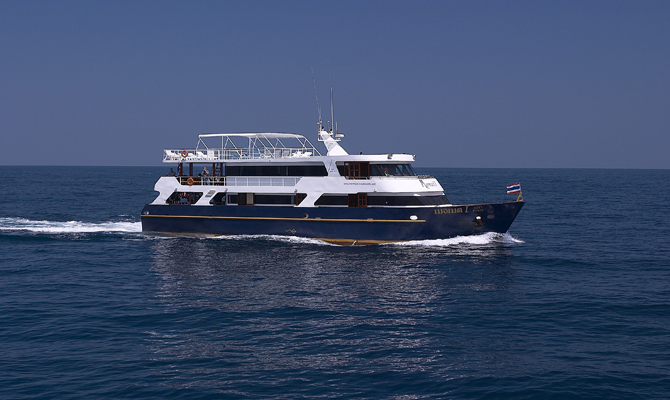





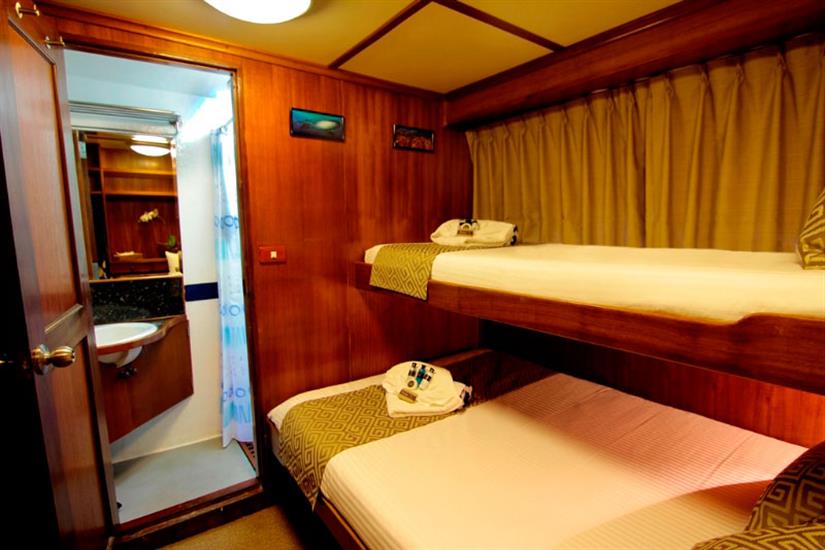
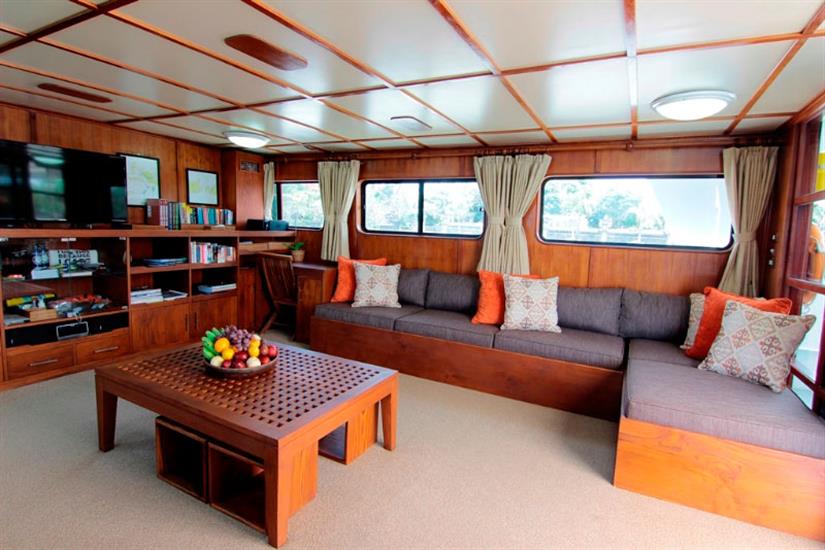
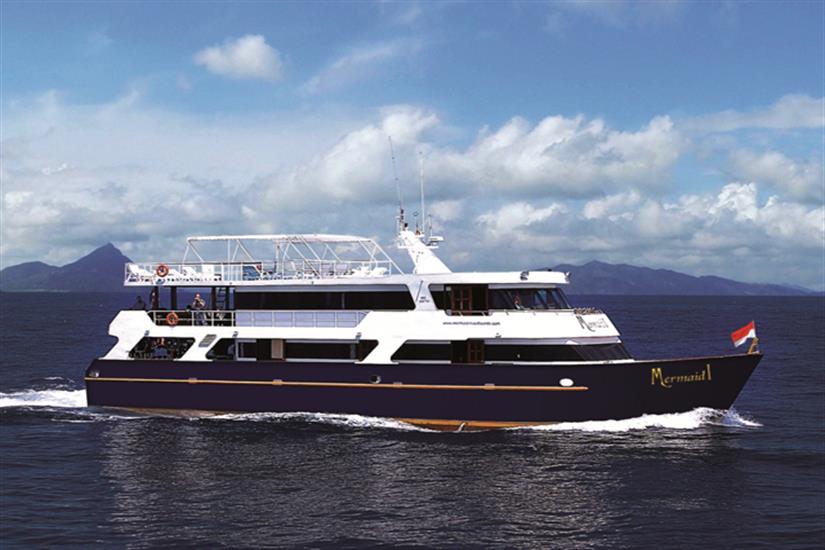
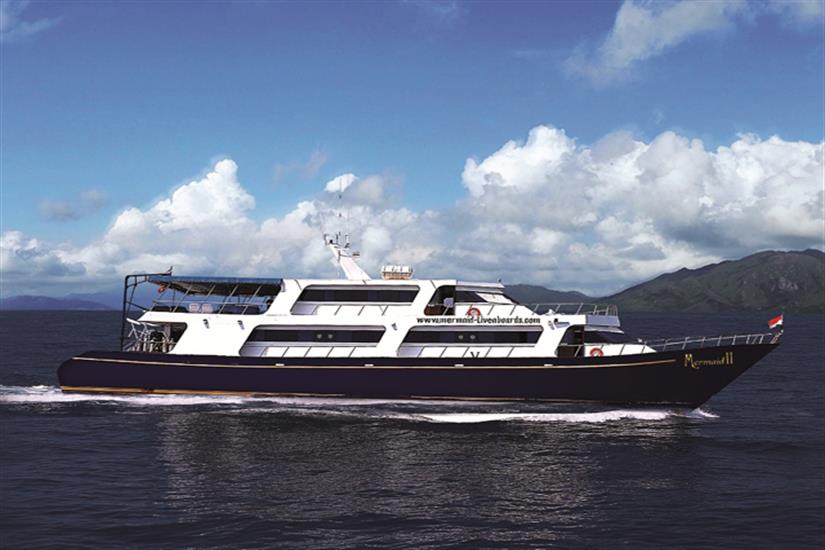
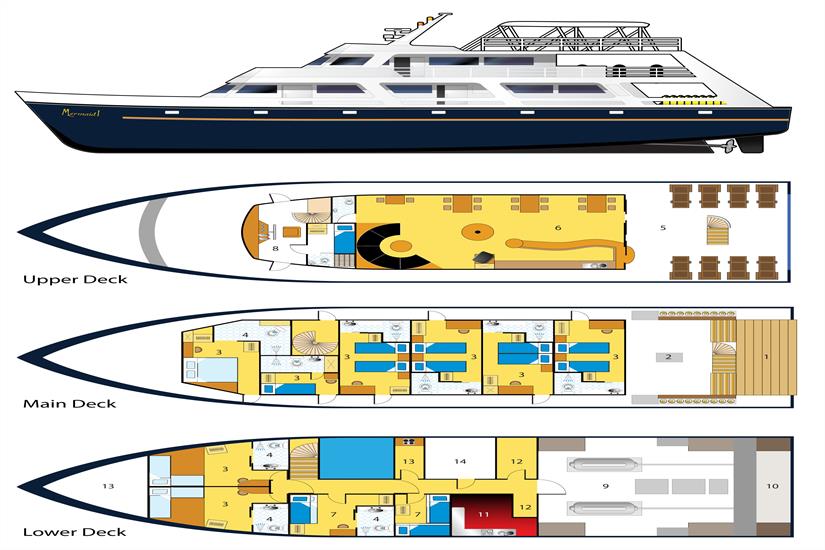



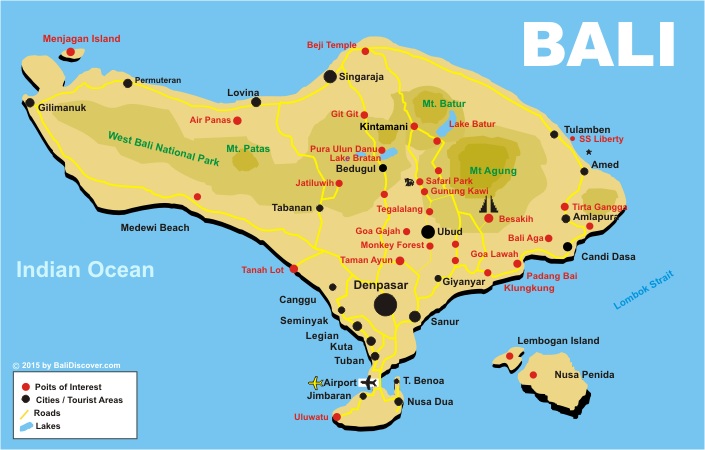
You must be logged in to post a comment.